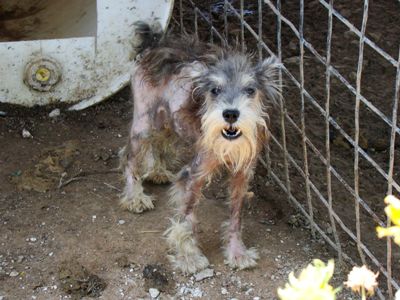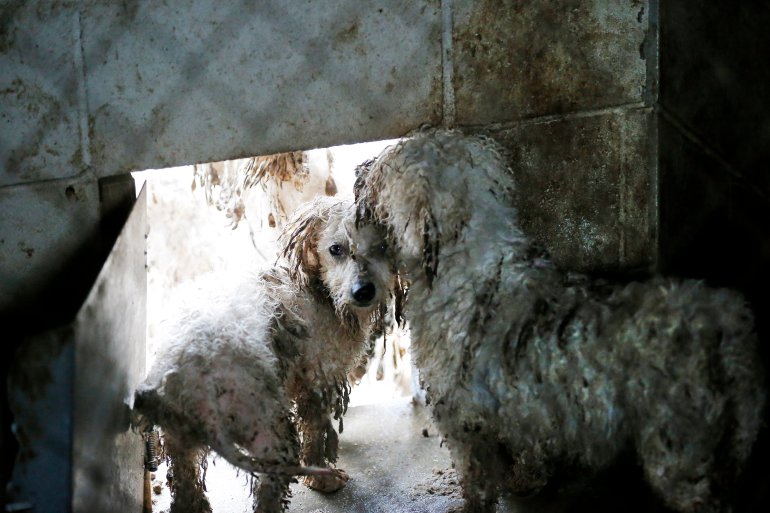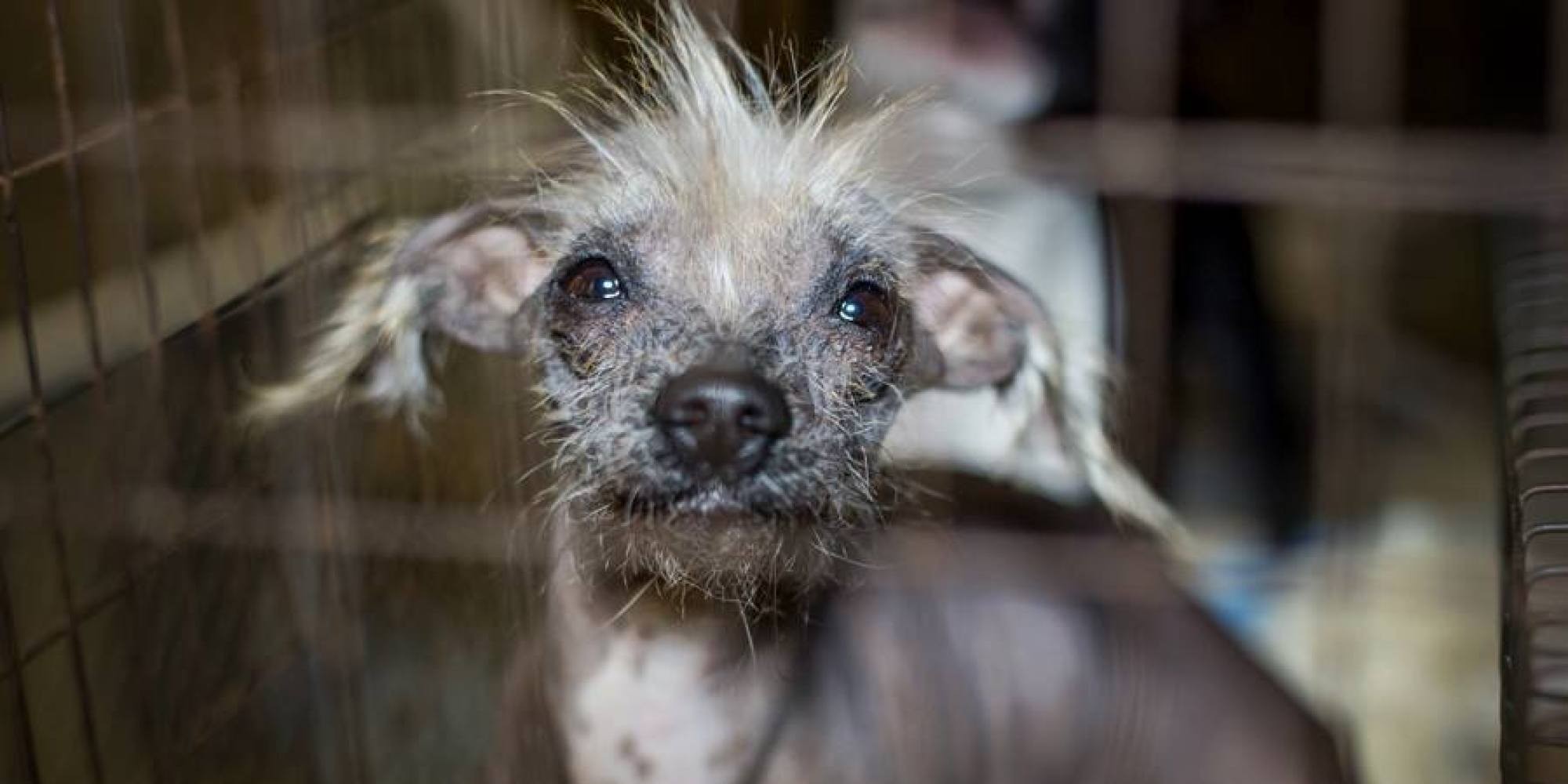Every year, tens of thousands of dogs are born into the filthy conditions in unregulated puppy mills nationwide.
Since dogs first crossed the Siberian land bridge and set foot in human encampments in North America, they have been much more than pets and companions to us – they made life tenable in this primal place.
They chased off wolves and bears while we slept, caught and retrieved the game we ate, and dined on the garbage we left behind. Over the course of 10 millennia, a bond was forged between two species that relied on each other for survival.
RELATED STORIES:
- New Jersey Senate Passes a Bill Forcing New Pet Stores to Only Sell Rescue Animals
- How to Make Perfect Bone Broth For Your Pets, Video and Recipe
The number of pet dogs in America is now almost 80 million. Pet-shop commerce had nearly boomed to nearly $65 billion in 2015. Now bred for profit, most of them are sold in pet stores or on websites by their third or fourth month of life.
The American Society for the Prevention of Cruelty to Animals posts a database of pet shops for consumers to find out where the dogs come from before they buy them. Pet stores usually buy their dogs from federally licensed breeders, meaning kennels with five or more breeding females. Conversely, many dogs are purchased from illegally ran mills with sickening sub standard conditions known as puppy mills.

“Puppy mills house breed dogs in small wire-floored cages, separate puppies from their mothers at a very young age, and ship them hundreds of miles to pet stores around the country,” says Matt says Lt. David Taylor, an animal-control cop
Where once you adopted your puppy from the neighbors, now there is a ‘Furry Paws’ down the block with dozens of designer puppies in the window.
Beginning in the 1950s, struggling pig and poultry farmers began breeding puppies for extra income. “It was a cheap and easy fix: You just converted your coops into indoor-outdoor kennels,” says Bob Baker, the executive director of the Missouri Alliance for Animal Legislation. Baker has been an animal activist for 40 years and considered a walking encyclopedia on the commercial dog business. He has been a senior investigator for the ASPCA and the HSUS and watched the trade evolve from a ‘mom-and-pop’ sideline into a multinational behemoth.
“Pups cost nothing to raise, you’d sell them for $50 a head in town, and every five months you had a whole new litter – then dozens, as the puppies began breeding,” he says.

What followed was a 40-year explosion of puppy mills, which are defined by HSUS as: ‘commercial kennels where profit counts more than the well-being of the dogs.’
There are, by HSUS’s estimate, about 10,000 puppy mills in America, though the organization says that no one actually knows the real number. The USDA only licenses a fraction of all kennels, about 2,500 of various sizes, which can range from five adult breed dogs to more than a thousand.

“States also license and inspect kennels, accounting for another 2,500 breed sites that are not registered with the feds,” says Kathleen Summers, the director of outreach and research for HSUS’s puppy-mills campaign. “But in rural communities, there are thousands of backyard kennels selling online and evading government regulation.”
A breeder only needs a federal license if he or she sells the dogs sight unseen, i.e., through a middleman like a pet store or a puppy broker.
The biggest of those brokers, the now-defunct Hunte Corporation, professionalized the trade in the Nineties. They bought up other brokers, made large investments in equipment, and moved thousands of dogs a month from their facility in Goodman, Missouri.
“I saw tons of sick puppies that Hunte bought from breeders. Of the 2,000 puppies they’d have on-site, hundreds were in the hospital one day, and the next day they’d load ’em on 18-wheelers and send them, still sick, to the stores.”
– “Pete,” undercover investigator for CAPS who worked at Hunte in 2004.
Per CAPS reporting, the dogs who proved ‘too sick to sell’ went back on a truck to Missouri. Hunte buried the dead ones out behind its plant. In 2003, state inspectors in Missouri cited Hunte for dumping more than 1,000 pounds of dead puppies per year – the maximum allowed under Missouri law – in its back yard.
In Pennsylvania, two breeders shot 80 Shih Tzus and cocker spaniels rather than provide veterinary care. (Many millers prefer small breeds now as they prove to be popular in cities and sell for top dollar. They are cheaper to feed, house, and ship.)
The USDA has exactly one law to govern the care and housing of commercial dogs. The Animal Welfare Act (AWA), enacted in 1966, set down the standards for breeders. Dogs, per the AWA, can be kept their entire lives in crates just inches bigger than their bodies. They can be denied social contact with other dogs, bred as many times as they enter heat, then killed and dumped in a ditch whenever their uterus shrivels.
“There’s this gross disconnect between our feelings for dogs and the way we guard them from abuse,” says Wayne Pacelle, the president and CEO of HSUS.
“The USDA has a total of 100 inspectors to inspect thousands of breeders in 50 states. But they also have to inspect every zoo, circus and lab that uses animals for research testing. We’ve been petitioning them for decades to improve the law – require bigger crates for breed dogs, give them access to outdoor dog runs and much prompter vet care when they’re sick – but they can’t even enforce the bad law on their books,” says Pacelle.
 A dog skeleton discovered during a raid on a puppy mill in Blue Springs, Mississippi. Amiee Stubbs
A dog skeleton discovered during a raid on a puppy mill in Blue Springs, Mississippi. Amiee Stubbs
Wes Eden is a tall young man with an artisanal and a crown of black hair, whose family runs a boarding barn, the Lone Star Dog Ranch, near McKinney, Texas. Eden is a devotional rescuer of dogs. Each year, he saves dozens of breeding dogs by buying them, for top dollar, at puppy auctions, where millers “sell each other their trash,” says Eden.
Eden claims that if “they’ve still got a couple of litters left,” someone was going to bid them up.”
Other grassroots groups use different tactics to bring down puppy mills. Some take to social media, building Facebook pages around graphic photos and pleas to spread the word. Then there are street warriors who picket pet stores, some with stunning results.
Mindi Callison, a young schoolteacher in Ames, Iowa, formed Bailing Out Benji six years ago. Since she has recruited countless students from Iowa State to protest with her. Callison tells me about a local pet-shop owner who “used to have dozens of pups in his window; now he sells two or three a month.” At first, she got flamed by furious millers. Soon after, and to her shock, a few quietly reached out, asking if she’d take their used-up dogs. “This year alone, they’ve given up almost 100, and we don’t pay a cent,” says Callison. They call her, she says, not out of charity, but to avoid the cost of euthanization.
 A dog found with an infected ear at a puppy mill in Blue Springs, Mississippi, in July 2015. Amiee Stubbs
A dog found with an infected ear at a puppy mill in Blue Springs, Mississippi, in July 2015. Amiee Stubbs
Six months ago, Kristin Akin bought a goldendoodle from a notorious puppy mill called Cornerstone Farms. “Websites give no clue about where a breeder’s based – a lot of the time, you can’t even get their name,” says the HSUS’s Summers. They hide behind sites like puppyspot.com, a huge Web broker that sells many breeders’ dogs out of its call-center office in Florida.
Solving the puppy-mill problem will be a long and arduous battle. Spreading consumer awareness of the conditions in the mills is only half the battle, though. Animal welfare groups must maintain sustained political pressure on the stores and websites that sell the puppies.
Whether it’s passing ordinances to ban the sale of pet-shop dogs, staging puppy mill raids, or pushing to toughen the national dog law, the efforts of animal-welfare groups are the best hope for a brighter tomorrow.

*Article originally appeared at Minds.











